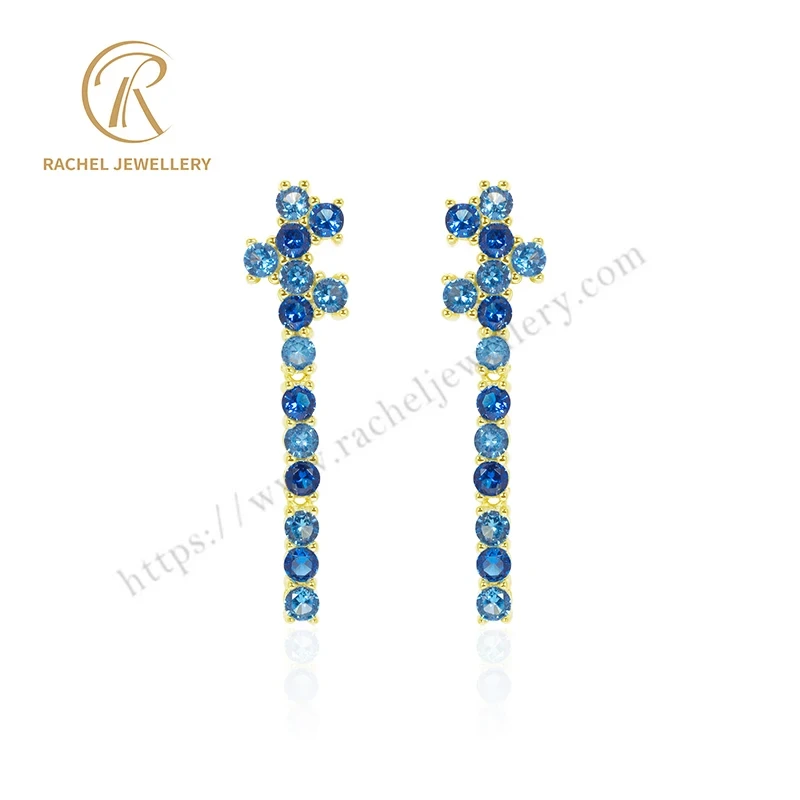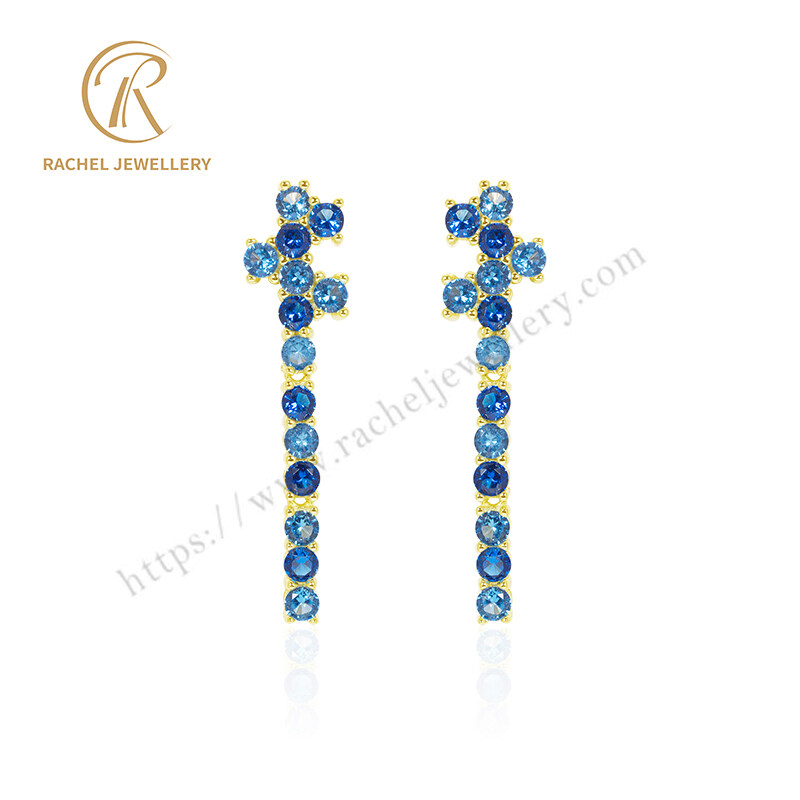خطأ في تنسيق البريد الإلكتروني
emailCannotEmpty
emailDoesExist
pwdLetterLimtTip
inconsistentPwd
pwdLetterLimtTip
inconsistentPwd


Sterling silver earrings are more than just accessories; they are pieces of art crafted with precision and care. From their initial creation to their final polish, the journey of sterling silver earrings is intricate and fascinating. This article will take you through the entire manufacturing process of sterling silver earrings and provide insights on how to identify high-quality pieces in the wholesale market.
Sterling silver earrings are prized for their elegance, durability, and versatility. But before these beautiful pieces make it to your jewelry box, they undergo a meticulous manufacturing process. Understanding this process not only helps appreciate the craftsmanship involved but also aids in making informed decisions when buying sterling silver earrings wholesale.
The journey of sterling silver earrings begins with sourcing the raw materials. Sterling silver is an alloy composed of 92.5% pure silver and 7.5% other metals, usually copper. This blend enhances the silver's durability while preserving its natural shine. Silver is mined from various regions worldwide, with major producers including Mexico, Peru, and China. Once extracted, the raw silver is transported to refineries where it is purified to meet the high standards required for jewelry making.
Refining is a crucial step in the production of sterling silver. The extracted silver ore is first crushed and then processed to remove impurities. The result is a high-purity silver that meets the 92.5% standard for sterling silver. This refined silver is then cast into ingots or billets, which serve as the starting point for crafting earrings.
Once the silver is refined, it is melted and alloyed with other metals to achieve the desired composition. The molten silver is poured into molds to create ingots or billets, which are subsequently cooled and solidified. These billets are then rolled or drawn into sheets and wires, ready for use in the manufacturing process.
The creation of sterling silver earrings starts with design. Designers and artisans collaborate to conceptualize and sketch earring designs, considering both aesthetic appeal and functionality. Modern jewelry design often involves digital tools, allowing for precise and intricate designs. These designs are translated into technical drawings and specifications that guide the manufacturing process.
With designs in hand, the next step is casting and molding. In this process, the sterling silver is heated until it reaches a molten state. The molten silver is then poured into molds that shape it into the various components of the earrings. Techniques like lost-wax casting are commonly used to create detailed and complex designs. Once cooled and solidified, these components are removed from the molds and prepared for further shaping.
After casting, the individual components of the earrings are shaped and assembled. Artisans use tools to refine the pieces, ensuring that they meet design specifications. This stage may involve bending, soldering, and joining different parts to create the final earring shape. Precision is key, as even the smallest imperfection can affect the overall appearance and quality of the earrings.
The final step in the manufacturing process is polishing and finishing. Sterling silver earrings are polished to achieve a smooth, shiny surface. This can involve using polishing compounds and buffing wheels to remove any scratches or imperfections. In some cases, additional finishes such as rhodium plating may be applied to enhance the appearance and provide added protection against tarnishing.
The role of artisans in the creation of sterling silver earrings cannot be overstated. Skilled artisans bring designs to life through their craftsmanship. They work with precision to ensure that each piece meets high-quality standards. Their expertise is crucial in shaping, assembling, and finishing the earrings, making them both beautiful and durable.
Designers play a pivotal role in influencing the aesthetic and functionality of sterling silver earrings. They create designs that reflect current trends, cultural influences, and personal styles. Their vision guides the entire manufacturing process, from initial sketches to the final product. Collaborating with artisans, designers ensure that their creative concepts are executed with accuracy and attention to detail.
When purchasing sterling silver earrings, especially in wholesale, understanding quality is essential. High-quality sterling silver earrings not only look stunning but also offer durability and value. Here’s how to distinguish between high-quality and low-quality sterling silver earrings.
One of the primary indicators of quality in sterling silver earrings is the purity of the silver. Sterling silver must contain 92.5% pure silver, with the remaining 7.5% usually being copper. To verify purity, look for the “925” hallmark, which indicates that the earrings meet the sterling silver standard. Low-quality silver may not adhere to this standard and could be mixed with lower-quality metals or plated rather than solid sterling silver.
Hallmarks and stamps are important for verifying the authenticity of sterling silver earrings. Reputable manufacturers will stamp their products with a hallmark that certifies their quality. Common hallmarks include “925” for sterling silver and additional marks that may indicate the manufacturer or country of origin. Checking these hallmarks can help ensure you are purchasing genuine sterling silver earrings.
High-quality sterling silver earrings exhibit meticulous attention to detail. Examine the design for precision in craftsmanship, including evenness in settings, smoothness in finishes, and overall alignment. Well-crafted earrings will have clean lines and flawless surfaces, indicating that skilled artisans have meticulously worked on them.
Durability is another critical factor in assessing quality. Sterling silver earrings should be sturdy enough to withstand daily wear without easily bending or breaking. Test the strength of clasps and settings to ensure they are secure. High-quality earrings are designed to maintain their shape and integrity over time, providing long-lasting value.
Certification plays a crucial role in ensuring the quality of sterling silver earrings. Reputable certification bodies, such as the International Gemological Institute (IGI) and the Gemological Institute of America (GIA), provide assurances regarding the authenticity and quality of silver jewelry. Certification can add value and credibility to sterling silver earrings, especially in the wholesale market.
Adherence to industry standards is essential for maintaining product quality. Standards set by organizations such as the American National Standards Institute (ANSI) and the Jewelry Vigilance Committee (JVC) help ensure that sterling silver jewelry meets specific quality requirements. These standards cover aspects such as silver purity, craftsmanship, and ethical practices, providing a benchmark for high-quality sterling silver earrings.
The journey of sterling silver earrings from raw materials to finished products involves a complex and meticulous process. Understanding this process helps appreciate the artistry and craftsmanship that go into each pair of earrings. Additionally, knowing how to distinguish between high-quality and low-quality sterling silver is crucial for making informed purchasing decisions, whether you're buying for personal use or wholesale distribution.
By focusing on the key aspects of manufacturing and quality, you can ensure that your sterling silver earrings are not only beautiful but also durable and valuable. Whether you’re a retailer looking to stock your shelves or a jewelry enthusiast seeking the perfect pair, knowing what to look for in sterling silver earrings will enhance your purchasing experience and satisfaction.